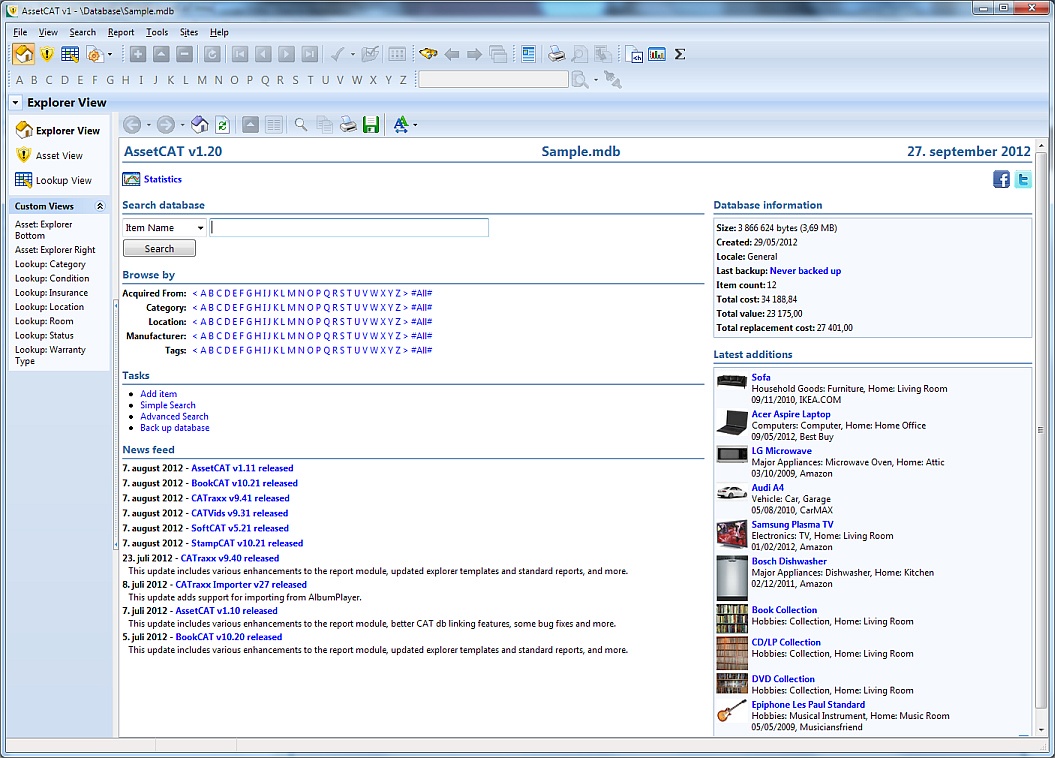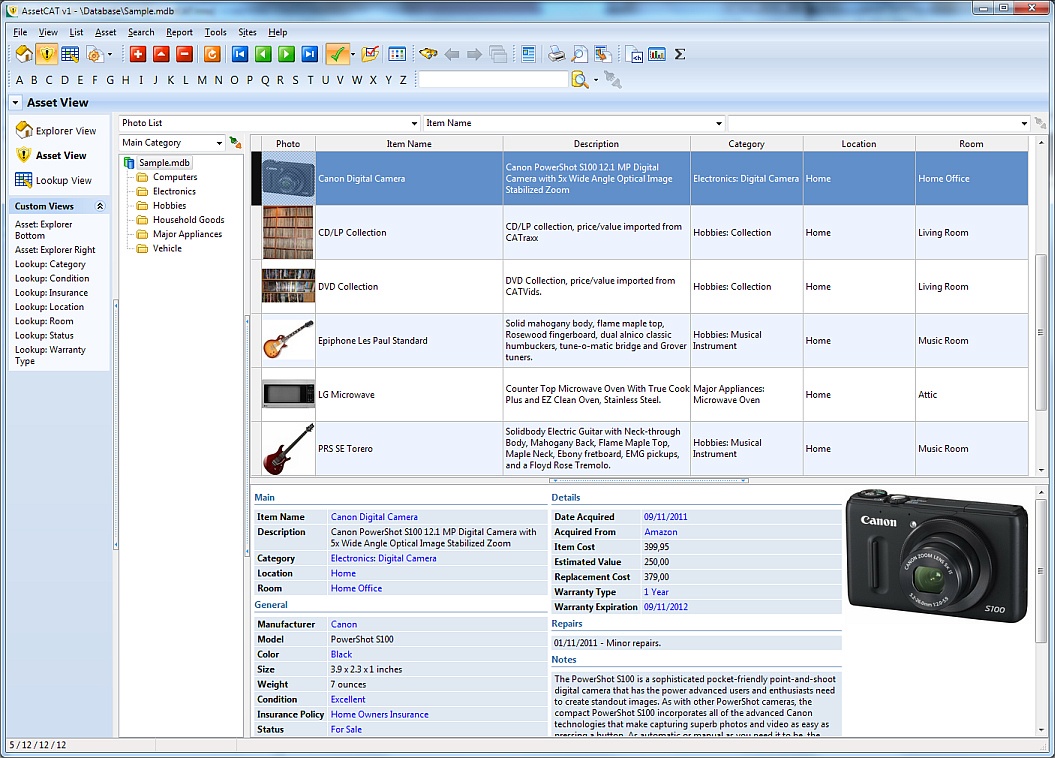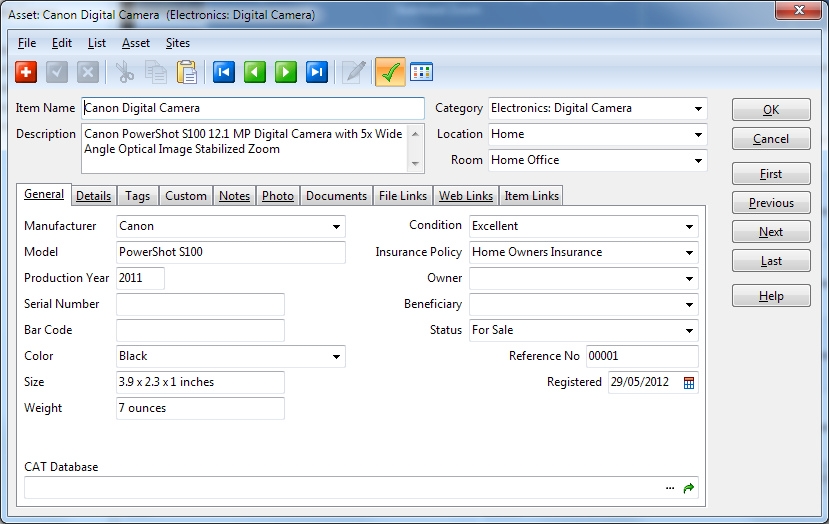|
Getting started |
  
|
Welcome to AssetCAT!
AssetCAT is a powerful inventory database program that will assist you in keeping track of your household items, valuables and collectibles. AssetCAT allows you to catalog a wide range of information, and create customized reports with details on each item including photos for your own records, or to share with your insurance agent so that you will be prepared if a disaster strikes. AssetCAT has all the essential features to fully document and catalog all your assets. Put your mind at rest and start today!
The first time you start AssetCAT, you see the "Welcome" screen. To open the sample database (Sample.mdb) click Open Sample Database. This database contains a few items to help you familiarize yourself with the program. Before you can start cataloging your assets, you must create your own database.
The main AssetCAT window is divided into three parts:
| 1. | The menu/toolbar at the top of the window. |
| 2. | The view bar to the left. |
| 3. | The rest of the window is occupied by the active view. There are a total of 3 different views: Explorer View, Asset View, and Lookup View. |
Here is the Explorer View:

When you open a database, AssetCAT opens the Asset View by default. To activate another view, click the view you want to activate in the view bar, select from the View button on the toolbar, or use the View menu.
For example, to activate the Explorer View, open the View menu and choose Explorer View (you can also press the Ctrl+1 shortcut). The Explorer is a fully featured browser integrated into the main window that allows you to search/browse your database.
You will use the Asset View the most. This is the view you use when you want to add new asset items to the database. To active the Asset View, choose Asset View from the View menu (or simply press the Ctrl+2 shortcut).

All views, except the Explorer view, utilize the same layout.
The main part of the view is occupied by the browse list, with the explorer pane below the list.
To the left of the browse list you see the grouping list, and above this, the drop-down list with available grouping definitions. The grouping feature is used to determine which items that are displayed in the browse list, and makes it possible to work with a subset of the database.
Above the browse list, you see three drop-down lists:
| • | The drop-down list to the left includes available list layouts. A list layout contains information about which fields to display in the asset list. You can create as many list layouts as you want. |
| • | The drop-down list in the middle includes available sort orders. A sort order defines the order in which items are displayed. The data in the database remains the same; only the way data is being displayed changes. Note: You can also change the sort order by clicking the header of the column you want to sort on. |
| • | The drop-down list to the right includes available filters. A filter is used to determine which items that are displayed in the browse list, and makes it possible to work with a subset of the database. |
To add a new item, choose Add from the Asset menu (or press the Ctrl+N shortcut).
To edit an item, simply double-click the item you want to edit in the browse list. This opens the 'Asset Edit' window.

To close the data entry window, click the OK button (or choose Close Window from the File menu). All changes are automatically saved.
If you need support, don't hesitate to contact us. If you want to order AssetCAT, please see our web site.
We hope you enjoy using AssetCAT!